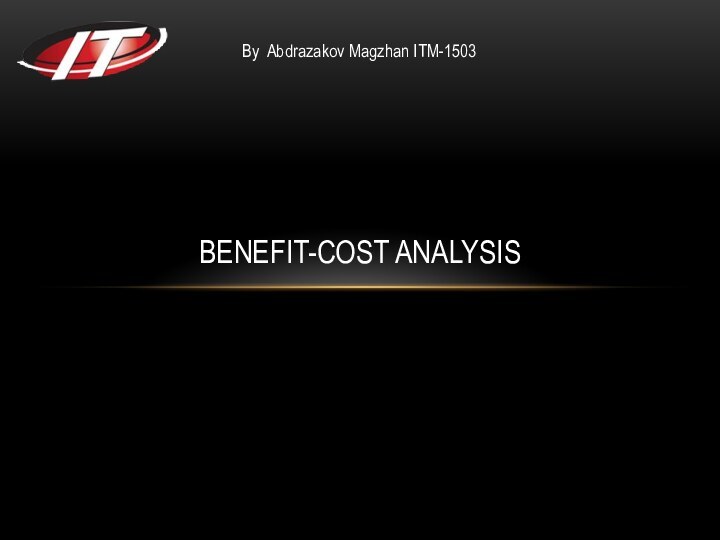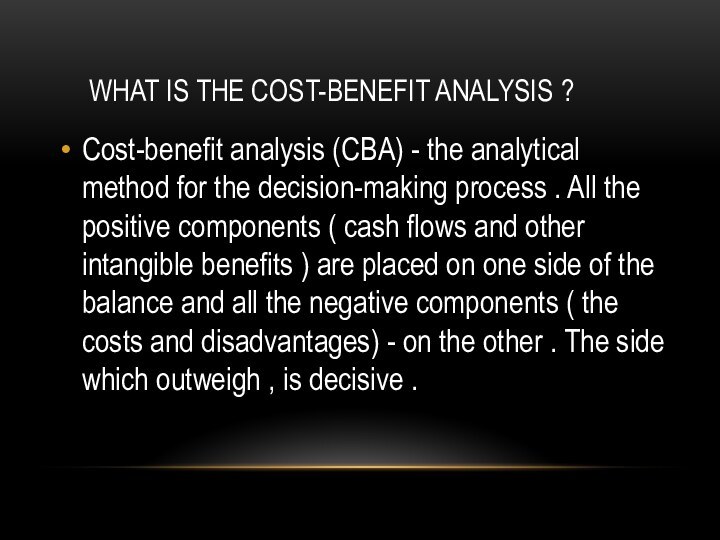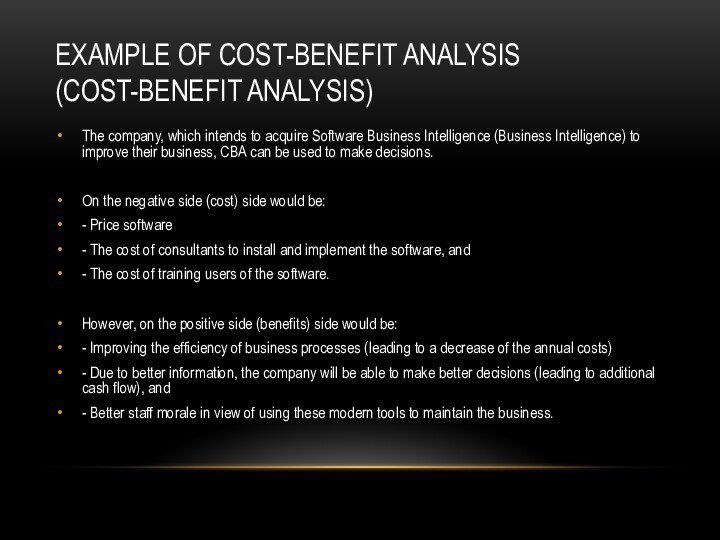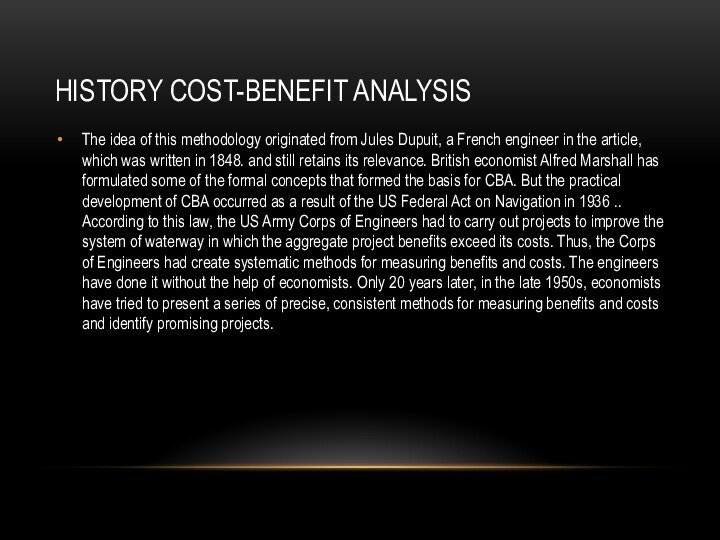- Главная
- Разное
- Бизнес и предпринимательство
- Образование
- Развлечения
- Государство
- Спорт
- Графика
- Культурология
- Еда и кулинария
- Лингвистика
- Религиоведение
- Черчение
- Физкультура
- ИЗО
- Психология
- Социология
- Английский язык
- Астрономия
- Алгебра
- Биология
- География
- Геометрия
- Детские презентации
- Информатика
- История
- Литература
- Маркетинг
- Математика
- Медицина
- Менеджмент
- Музыка
- МХК
- Немецкий язык
- ОБЖ
- Обществознание
- Окружающий мир
- Педагогика
- Русский язык
- Технология
- Физика
- Философия
- Химия
- Шаблоны, картинки для презентаций
- Экология
- Экономика
- Юриспруденция
Что такое findslide.org?
FindSlide.org - это сайт презентаций, докладов, шаблонов в формате PowerPoint.
Обратная связь
Email: Нажмите что бы посмотреть
Презентация на тему Benefit-cost analysis
Содержание
WHAT IS THE COST-BENEFIT ANALYSIS ?Cost-benefit analysis (CBA) - the analytical method for the decision-making process . All the positive components ( cash flows and other intangible benefits ) are placed on one






Слайд 2 WHAT IS THE COST-BENEFIT ANALYSIS
?
decision-making process . All the positive components ( cash flows and other intangible benefits ) are placed on one side of the balance and all the negative components ( the costs and disadvantages) - on the other . The side which outweigh , is decisive .
Слайд 3
EXAMPLE OF COST-BENEFIT ANALYSIS (COST-BENEFIT ANALYSIS)
The company, which
intends to acquire Software Business Intelligence (Business Intelligence) to
improve their business, CBA can be used to make decisions.On the negative side (cost) side would be:
- Price software
- The cost of consultants to install and implement the software, and
- The cost of training users of the software.
However, on the positive side (benefits) side would be:
- Improving the efficiency of business processes (leading to a decrease of the annual costs)
- Due to better information, the company will be able to make better decisions (leading to additional cash flow), and
- Better staff morale in view of using these modern tools to maintain the business.
Слайд 4 STAGES OF COST-BENEFIT ANALYSIS COST-BENEFIT ANALYSIS INVOLVES FOUR BASIC
STEPS:
1. The definition of the costs and benefits of
the project;2. The assessment of costs and benefits;
3. Comparison of the total costs and benefits over the life of the project;
4. The selection of the project.
In the first stage of the project are determined by the analysis of all the related costs and benefits, justified their relationship with the project. The new project will involve resources from other sectors of the economy. At this stage of the analysis it is important to compare the losses and gains.
The second stage - assessment of costs and benefits - is a necessary stage in the analysis, which requires special attention and creativity. Tangible goods such as capital equipment, labor, land, and so on. F. Should be evaluated.
At the third stage of analysis, future costs and benefits of the project are compared to the cost of investment in the project to date.
At the last stage of the analysis project is located in the descending order from the very good to the poor on the basis of cost-benefit ratio, the net present value of the project (net present value), the coefficient of return on investment.





























